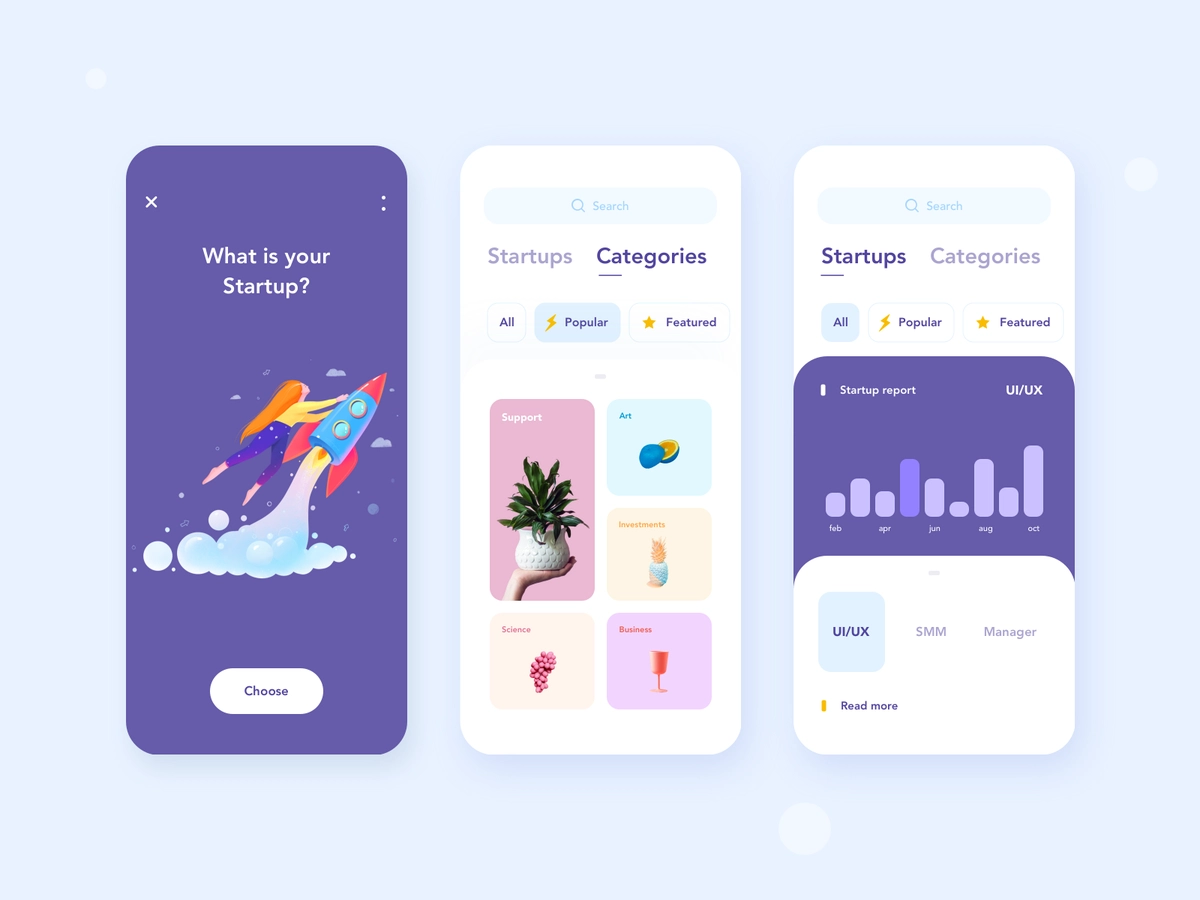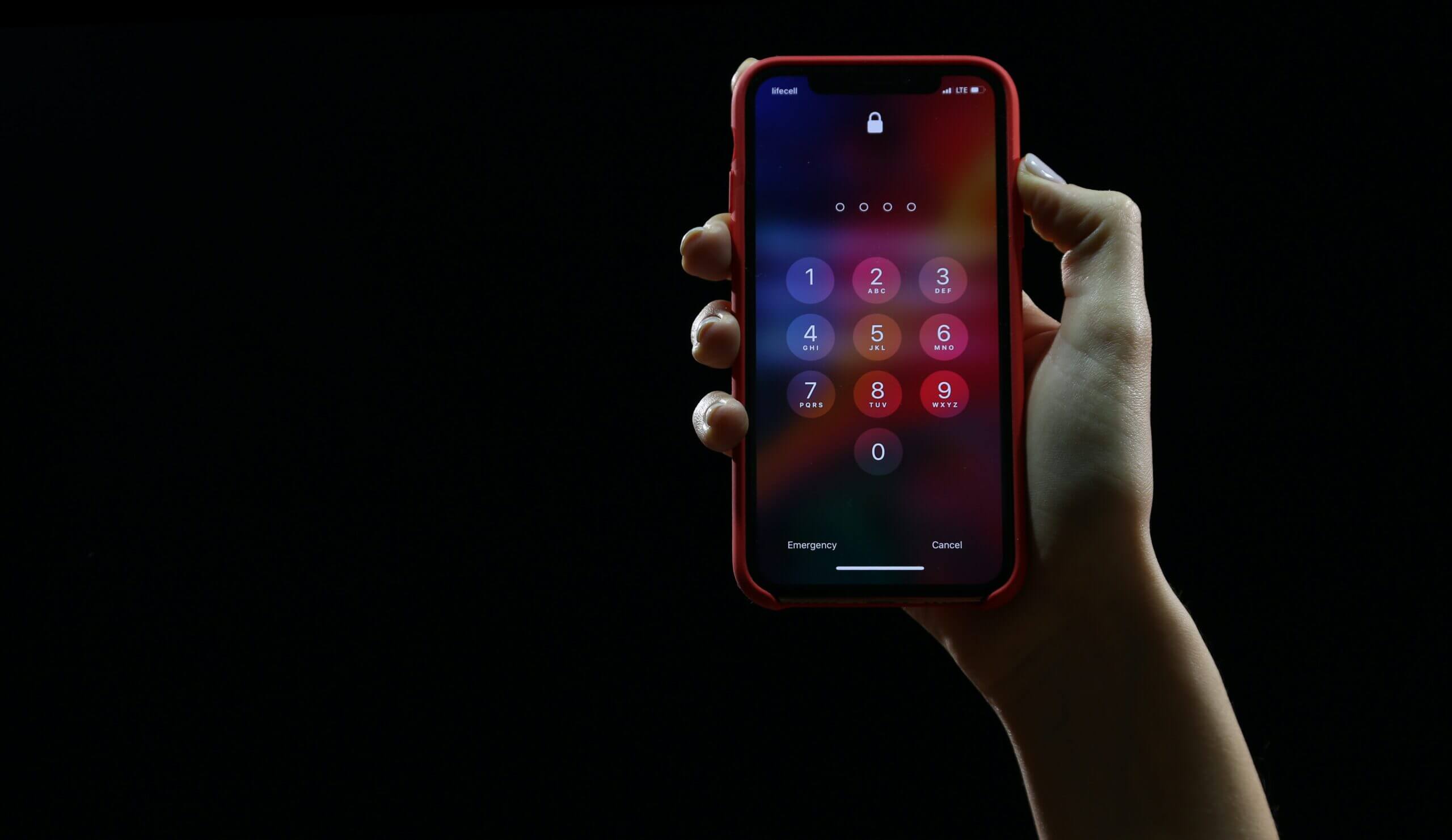Learn About Different Types of Mobile Application: Examples & How-To
Nowadays, mobile apps come in various shapes and sizes. They form three categories based on their program work: hybrid, native, and mobile applications for websites. Let’s take a closer look at these types of mobile application examples from a cross platform app development services company.

Native apps
Native apps are primarily created to fit a specific operating system (iOS, Android, Windows, etc). To reach the audience, you need to develop several separate applications for different operating systems. These different programs can have the same functions and design. This increases the project time and development budget.
Native apps are independent of an internet connection, although some of them do require a connection. They take up less memory and battery power and are fast. They are allowed to access the hardware of the mobile phone with the owner’s permission.
Technologies
What are the technologies used for native apps? Here, you may find native application tools and programming languages. Swift and Java are the main open-source programming languages used by Apple and Google. Xamarin is a cross-platform software development tool. It is more often used for native app development on iOS and Android, as well as other platforms. And that relies on C# as a programming language.
Pros
The top technology advantages include
- Speed
- Offline work
- A recognizable look and feel
- The ability to maintain aspect ratios
Cons
Among the most significant downsides of it are the lengthy downloading process, no flexibility, and expensive and time-consuming development. They also require frequent upgrades.
Native mobile app examples
There are countless native mobile application examples available on various app stores. From social media to gaming and productivity, these applications serve a wide range of user needs. Let’s take a look at some of them.
WhatsApp is one of the native kinds of mobile apps. It is the US free instant messenger and voice-over IP service. This Meta-owned app is famous worldwide. This smartphone and tablet application is based on Android or iOS.
Spotify
This is an internet streaming audio service to legally listen to music and podcasts and read audiobooks without downloading them to your device. It operates as a website and app for all operating systems, smart and mobile devices, and car media systems.
SoundCloud
SoundCloud is a free platform for sharing and listening to audio files. This app was specially designed for music lovers of different genres.
Hybrid apps
They occupy an intermediate position among the native types of mobile apps and web programs. Hybrid apps have limited access to smartphone hardware (camera, microphone, geolocation, address book). They depend on an internet connection to download data from an external source. Most of the promo services fall into this category.
There are disadvantages to hybrid programs. These services operate on a small amount of information. The app design does not adapt to screen size and enlargement. This may affect their performance speed and cause inconveniences for the users.
Technologies
Hybrid apps are essentially web apps that have been put in a native app shell. Once they are downloaded from an app store and installed locally, the shell is able to connect to whatever capabilities the mobile platform provides through a browser that’s embedded in the app. The key technologies that are used by Hybrid apps are React Native, Ionic Framework, NativeScript, Quasar, Kendo UI, Aurelia, Onsen UI, etc.
Pros
Hybrid apps’s advantages are combining user experience with an agile development cycle and well-controlled costs. Also, it helps you avoid the limitations of the Apple App Store, where there is a waiting time for app validation. A shorter development timeframe speeds up the time to market.
Cons
Nevertheless, hybrid application development requires an internet connection, more extensive QA testing, and an integration phase. Apps have a limited user interface: hybrid apps have a design that doesn’t have a native feel. Among the other cons, you will also find:
- Limited capabilities
- Poor user experience
- Need for native app developers
Hybrid mobile application examples
Hybrid mobile applications have been gaining popularity in recent years, as they offer the benefits of both native and web applications. By combining native code with web technologies, hybrid apps can run on multiple platforms and devices. They provide a seamless and responsive user experience.
Some of the most prominent hybrid mobile app examples include those used for social media, ride-sharing, and professional networking.
Gmail
Gmail is an example of mobile apps for emails. It allows working with documents, sharing photos, and even calling friends. All this can be done within one window.
Evernote
This app helps you capture ideas, prioritize project tasks, control to-do lists, and keep your life in check. In 2020, Evernote for Android joined the list of updated Evernote apps available for iOS, Windows, and Mac.
X (former Twitter)
A well-known system is one of the examples of mobile applications for social networking. X is the most famous among hybrid apps, released back in 2006 under the brand name Twitter. The users can post short text notes (up to 140 characters) and some media.

Differences between native and hybrid apps
It is difficult to say exactly where the clear line between native and cross-platform web applications lies today. The functionality of HTML5 is growing every day, and more and more sites are using it.
See the comparison of different types of mobile apps and their features here:
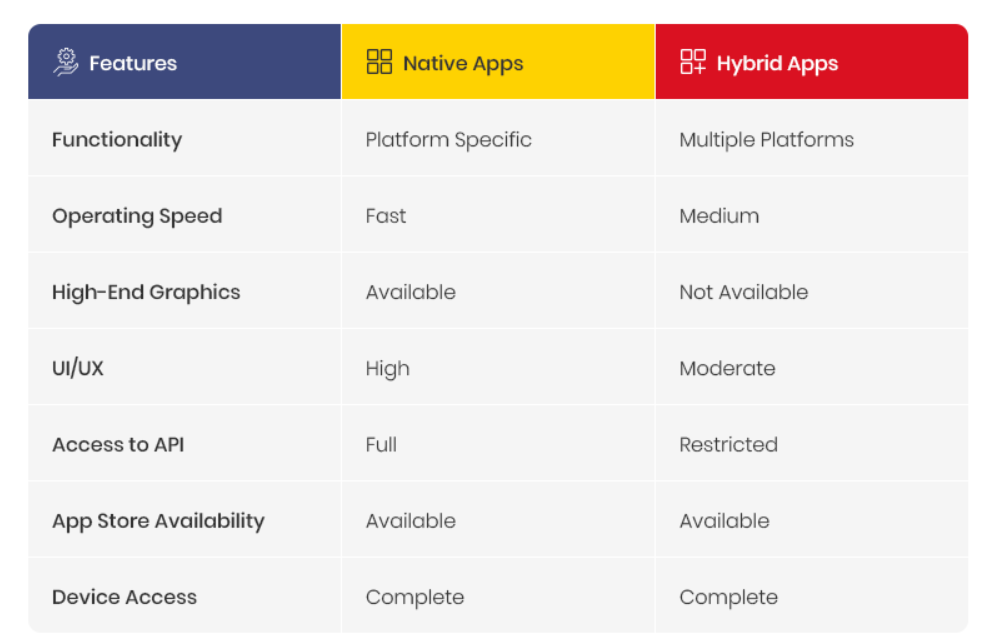
Mobile apps
Web applications represent different types of mobile apps. Basically, they’re adaptations of websites for smartphone device users. They are created so that users may visit the site at any time, even without access to a personal computer or laptop. Some web services need to be downloaded and installed. Others are launched when you visit the site through a mobile browser.
Technologies
The leading mobile app development languages are Java, Kotlin, Swift, Objective-C, C++, C#, and HTML5. Also, many technologies nowadays are influencing mobile application development:
- 5G
- Augmented and virtual reality
- Artificial intelligence
- Machine learning
- Beacon technology
- Wearable devices
- Blockchain technologies
Mobile apps are specifically designed for use on small, wireless computing devices.
Pros
Mobile apps offer a lot of advantages, including improved mobile app UI design, targeting more user audiences, and direct access to your users. Mobile platforms offer better feature sets and full access to operating system functionalities such as push notifications. This provides a range of options for promoting services and events directly.
Cons
The disadvantages of mobile apps, however, may include the following:
- Difficulty to create
- The high cost of development and promotion
- The need for constant updates and support
Mobile application examples
Mobile app development has revolutionized the way we interact with software. With millions of apps available in various app stores, it is hard to determine which ones are worth looking at. Now, we’ll take a look at some examples of mobile applications that you should definitely check out.
In 2004, Zuckerberg began with a web application, which is a good starting point for creating a social media platform. At that time, there were few mobile app alternatives. Later, Facebook was launched as a mobile app. Today, there are more options available to create a popular social media platform in a different format.
This one is also among the most well-known types of mobile application examples. This visual tool is perfect for finding ideas for recipes, home and style decor, and more. It is considered one of the biggest inspiration spots.
Probably, this is the most extensive social network for sharing photos. The technology was built as a mobile app for websites, which is hard to believe.
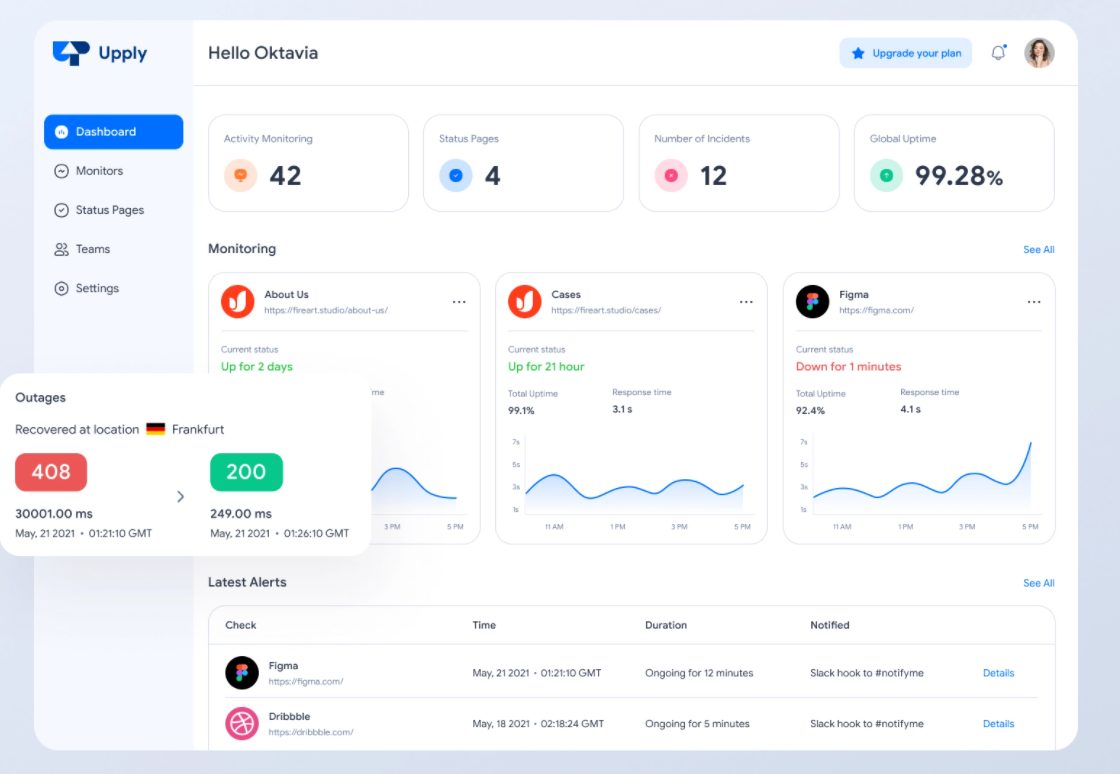
Categories of mobile apps by usage
When choosing the right mobile app for your online business, it’s essential to understand the different types and their unique features. Here are the various types of mobile apps and their specific uses to keep in mind.
1) Information mobile applications
This type of mobile application assists users in forming new skills or learning new data. For example, language learning applications have become incredibly common since they give customers the flexibility they look for in learning.
Instructive game applications are a fantastic tool for youngsters. Various informative applications are popular among instructors or tutors, who use them to improve their teaching cycle or other self-improvement activities.

2) Game apps
Purely entertaining mobile applications are the most popular category that comprises incredible games and more. You would be bewildered by the number of customers who launch games on their phones.
Corporations invest significant time and resources in promoting games and their mobile versions, as it is a profitable market.
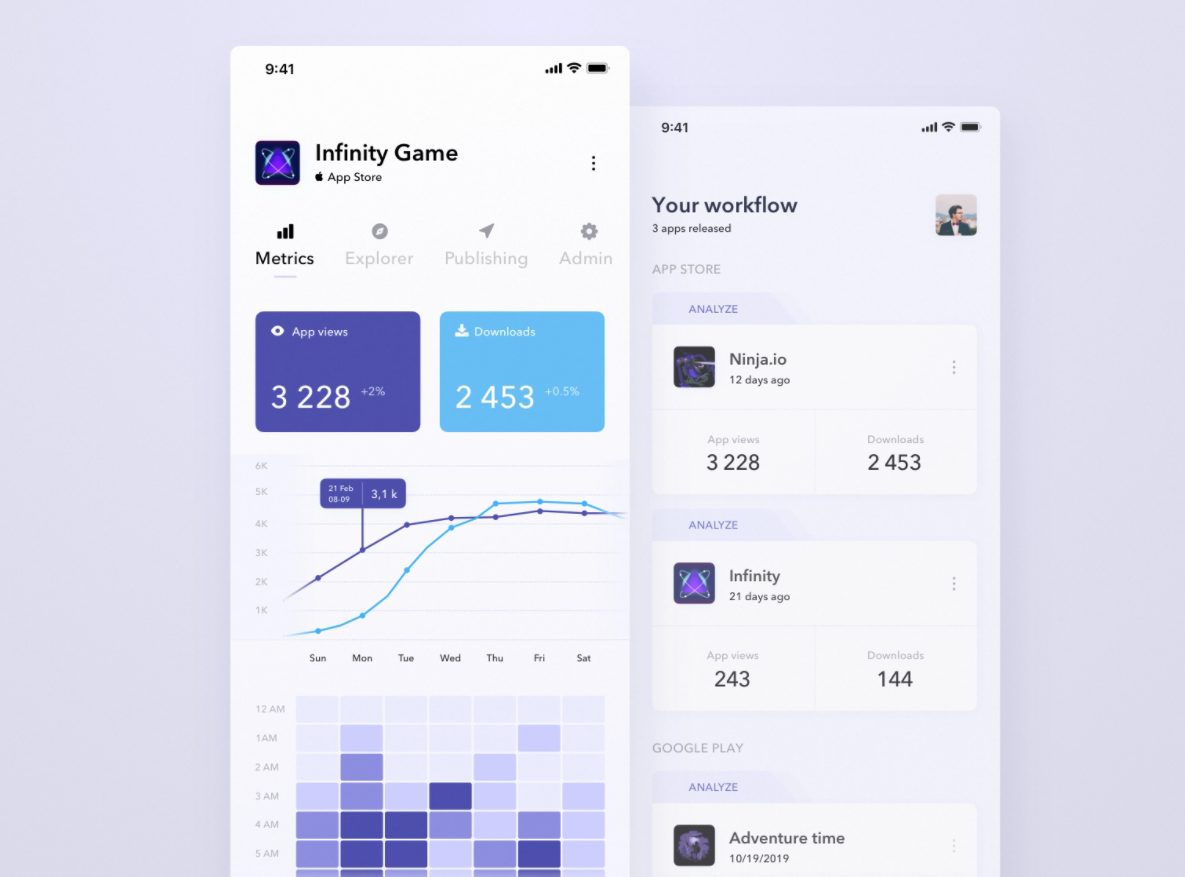
3) Social media mobile applications
Different mobile app types are not limited to programs only. These may also be social networks. Such apps allow customers to share video content, search for events, talk or watch content on the web, chat, and so much more.
Online media applications, such as Facebook and Instagram, as well as streaming applications like Netflix and Amazon Prime Video, are popular with customers around the world. These mobile applications offer users various engaging techniques and constantly adapt to meet their needs.

4) Productivity mobile apps
One type of mobile app that will always be popular is productivity tools. You may now get organized with these productivity apps in no time:
- #1: Serene (macOS)
- #2: Todoist (Windows, Mac, iOS, Android, Chrome, Safari, Firefox)
- #3: Wunderlist (Windows, Mac, iOS, Android, Chrome, Safari)
- #4: Trello (Windows, Mac, iOS, Android, web)
- #7: Airtable (Windows, Mac, iOS, Android)
Also, you may create that of your own. The sky’s the limit. Feel free to check out more productivity app examples.
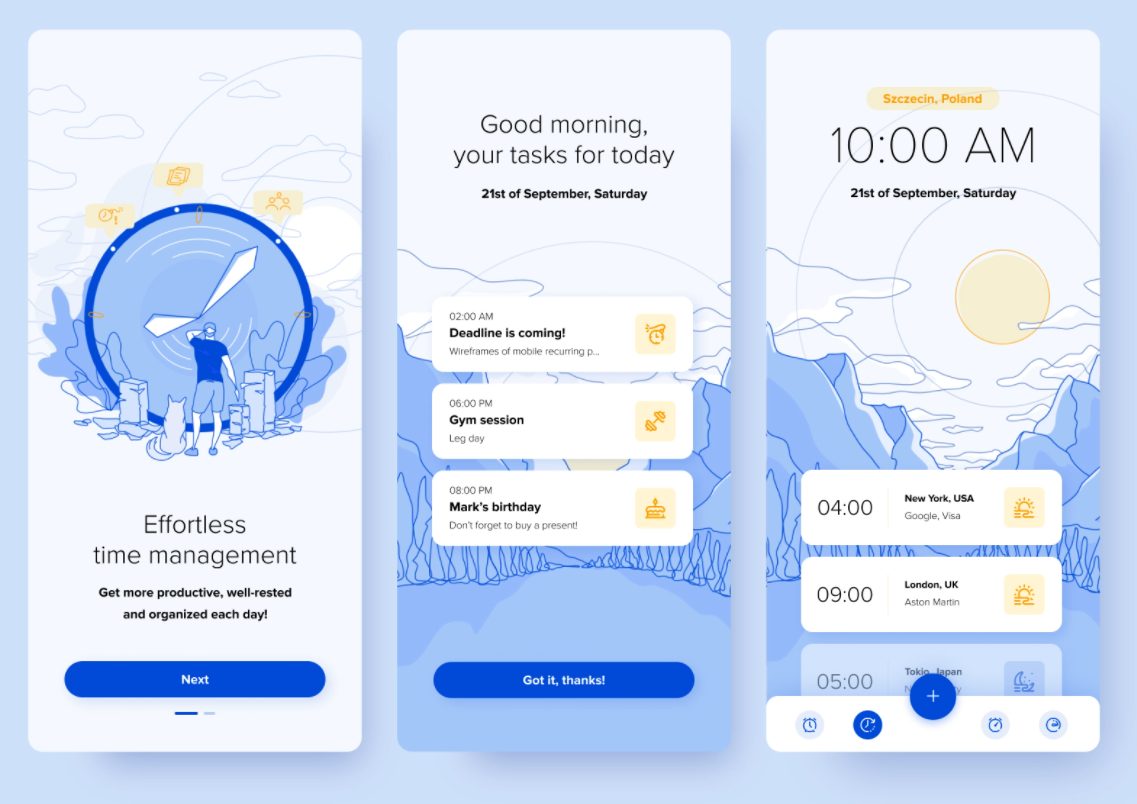
5) Lifestyle mobile applications
The users are fond of mobile applications like that. Travel apps are one of the most favorite here. The mobile application aims to assist clients with various lifestyle issues, such as walking, traveling, reading, and hobbies.

6) Utility mobile apps
Utility apps are one of the most valuable kinds. Indeed, utility applications typically have the shortest user session time. Individuals often apply them to complete specific commands, accomplish things, and proceed onward.
The most mainstream utility apps are standardized technologies like identification scanners, medical services applications, and trackers.
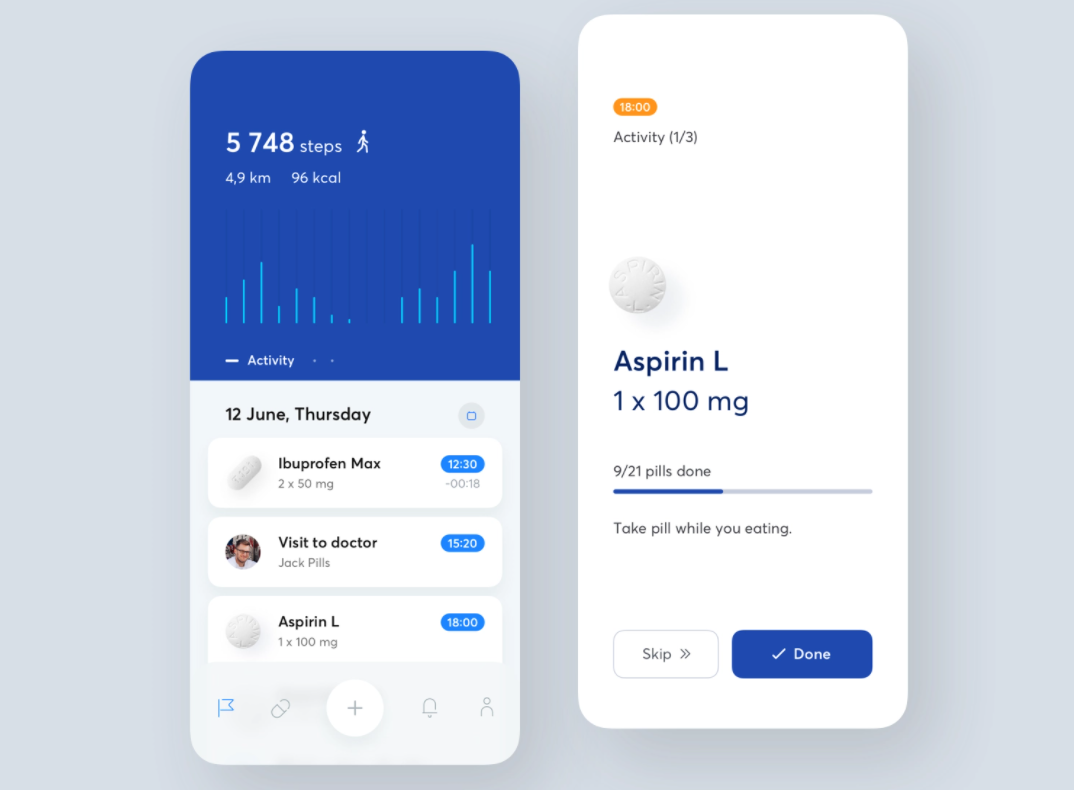
How to choose which type of application to develop?
Before making a final decision, think about hybrid and native apps’ pros and cons. Conducting demographic research and designing an overall marketing strategy will help determine the needed investment in custom mobile app development. Also, a professional development team will help you make a sober decision.
Focus on your budget and choose the mobile app type that suits you perfectly. Rate the level of your confidence in different kinds of mobile apps.
Hybrid mobile app development is the best option when you are unsure of the user’s initial response or have no clear idea of what your final app should look like. On the other hand, native apps may offer a high level of functionality and great UX. They perform better than hybrid apps. Read also: Successful Dating App Design
Conclusion
Businesses need to have user-friendly programs that can help promote their products or services. One effective way to achieve this is by creating mobile apps that can be used on mobile devices.
With new models of smartphones and updated operating systems constantly being released, the app must be compatible with all devices. If it’s not, users may end up uninstalling it from their phones.
Also, the software must adapt to user requests. If you don’t offer your customers the useful, innovative features they want, your competitors will. So, you need to constantly update features and add new user experiences to maintain audience reach and user loyalty.
There are already dozens of programs for solving each problem. So, to stand out from the competition, you need to hire the Android application developer to offer an innovative, top-notch level of implementation of your existing business idea.
Consider the variety of types of mobile apps with examples. This will help you make the right choice based on the main advantages and disadvantages of mobile applications.
To better dive into the different types of mobile application development and other product design nuances, contact us for the android application development services.




